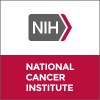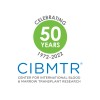
Umbilical Cord Blood Transplant, Cyclophosphamide, Fludarabine, and Total-Body Irradiation in Treating...
Acute Biphenotypic LeukemiaAcute Lymphoblastic Leukemia19 moreThis phase II trial studies how well giving an umbilical cord blood transplant together with cyclophosphamide, fludarabine, and total-body irradiation (TBI) works in treating patients with hematologic disease. Giving chemotherapy, such as cyclophosphamide and fludarabine, and TBI before a donor umbilical cord blood transplant helps stop the growth of cancer and abnormal cells and helps stop the patient's immune system from rejecting the donor's stem cells. When the healthy stem cells from a donor are infused into the patient they may help the patient's bone marrow make stem cells, red blood cells, white blood cells, and platelets. Sometimes the transplanted cells from a donor can make an immune response against the body's normal cells. Giving cyclosporine and mycophenolate mofetil after transplant may stop this from happening.

Revlimid in Transfusion Dependent Patients
Myelodysplastic SyndromeThis is a prospective trial of Revlimid for subjects who have a blood cell cancer called myelodysplastic syndrome (MDS). Cells in their marrow make proteins through messages that are carried from the genes. The amount of the message tells researchers if the protein it is going to make is high or low. This is known as expression of genes. The purpose of this study is to conduct a prospective trial testing the idea that expression of specific genes can help to predict which patients will respond to study drug administration with Revlimid (lenalidomide).

Contribution of Anti-platelet Antibodies Identified With MAIPA Assay in the Demonstration of the...
ThrombocytopeniaImmune Thrombocytopenia1 moreImmune thrombocytopenia (ITP) is an autoimmune disease but, paradoxically, and unlike other autoimmune diseases, antiplatelet antibodies are not used either for the diagnosis of the disease or for its prognosis. ITP is a diagnosis of exclusion retained after elimination of other pathologies leading to a thrombocytopenia. No major study has prospectively evaluated the diagnostic value of the presence of anti-platelet antibodies in the etiological investigation of a thrombocytopenia, nor the impact of platelet antibodies on the course of ITP. The gold standard analysis for the determination of platelet antibodies, is the "monoclonal antibody immobilization of platelet antigens" assay (MAIPA), either direct to detect autoantibodies attached to platelets, or indirect to detect circulating antiplatelet antibodies. Therefore, this work aims to study the contribution of the presence of anti-platelet antibodies detected in MAIPA to determine the autoimmune nature of a thrombocytopenia at diagnosis.

A Single-arm Trial of Roxadustat Combined With Retinoic Acid in the Treatment of Refractory Low-risk...
Myelodysplastic SyndromesRoxadustat has been approved for low-risk MDS clinical trials, but the trial results are not available. For refractory low-risk MDS, the effective rate of roxadustat treatment is about 20-30%, and roxadustat combined with retinoic acid may have better efficacy in the treatment of refractory low-risk MDS.

Reduced Intensive Idarubicin and Cytarabine Plus Venetoclax as First-line Treatment for Adults With...
Acute Myeloid LeukemiaMyelodysplastic SyndromesReduced intensive 3 + 5 idarubicin and cytarabine chemotherapy plus venetoclax as first-line treatment for adults with acute myeloid leukaemia and high-risk myelodysplastic syndrome

Prolonged Ultra Low-dose Decitabine Plus Venetoclax for Primary Diagnosed Elderly AMLK/MDS
Acute Myeloid LeukemiaMyelodysplastic SyndromesTo explore the efficacy and safety of prolonged low-dose decitabine (10 days of 6mg/m2) plus venetoclax (3 weeks/cycle) regimen in primary diagnosed elderly or frail AML/ high-risk MDS.

Eltanexor (KPT-8602) With Inqovi (Decitabine-Cedazuridine) in High-Risk Myelodysplastic Syndromes...
Myelodysplastic SyndromesBackground: Myelodysplastic syndromes (MDS) are diseases that affect the bone marrow. They can inhibit the blood formation process and reduce blood cell counts. High-risk MDS can lead to leukemia. People with high-risk MDS have a low survival rate. Better treatments are needed. Objective: To test a study drug (KPT-8602), combined with another drug (Inqovi), in people with MDS. Eligibility: Adults aged 18 years and older with high-risk MDS that did not respond to treatment. Design: Participants will be screened. They will have a physical exam. They will have blood and urine tests and tests of their heart function. They may have a bone marrow biopsy: Their hip will be numbed; then a needle will be inserted to draw out a sample of soft tissue from inside the bone. They will answer questions about their quality of life. Genetic tests may be performed. KPT-8602 and Inqovi are both tablets taken by mouth. Participants will take these drugs at home on a 28-day cycle. They will take Inqovi once a day on days 1 to 5. They will take KPT-8602 on a schedule assigned by the researcher. Participants will be given a drug diary to record each dose. Participants will visit the clinic for an exam at least once in each cycle. Some tests, including the bone marrow biopsy, may be repeated. Participant will continue treatment for at least 6 cycles. If their disease improves, they may continue taking the drugs after 6 cycles. Participants will have follow-up visits at the clinic for about 8 years.

HLA-Mismatched Unrelated Donor Peripheral Blood Stem Cell Transplantation With Reduced Dose Post...
Acute Lymphoblastic LeukemiaAcute Myeloid Leukemia9 moreThe goal of this clinical trial is to determine the effectiveness of Reduced Dose Post-Transplant Cyclophosphamide (PTCy) in patients with hematologic malignancies after receiving an HLA-Mismatched Unrelated Donor (MMUD) . The main question[s] it aims to answer are: Does a reduced dose of PTCy reduce the occurrence of infections in the first 100 days after transplant? Does a reduced dose of PTCy maintain the same level of protection against Graft Versus Host Disease (GvHD) as the standard dose of PTCy?

Magrolimab Plus Intensive Chemotherapy in Newly Diagnosed AML or HR-MDS
Acute Myeloid LeukemiaMyelodysplastic NeoplasmUse of magrolimab in combination with standard intensive chemotherapy ("7+3" or CPX-351) in newly diagnosed "ELN 2022 intermediate or adverse-risk" AML or high risk MDS patients, who intend to undergo allogeneic stem cell transplantation

Comprehensive Molecular and Clinical Evaluation of Pediatric and Adult Myelodysplastic Syndromes...
Myelodysplastic SyndromesBackground: Myelodysplastic syndromes (MDS) occur when the cells that make blood cells are abnormal. There are limited treatment options for MDS. Researchers want to learn more through this natural history study so they can develop better treatments. Objective: To study the natural course of MDS and MDS/myeloproliferative neoplasms (MPN) and collect biological samples that can help researchers understand the disease. Eligibility: People with suspected or confirmed MDS or MDS/MPN. Healthy donors are also needed. They can be people who are scheduled to donate bone marrow at NIH for a relative, or they may be providing bone marrow in another study. Design: Participants will be screened with a medical history. Participants will have a physical exam. They will give blood and urine samples. They will discuss their symptoms, medications, and ability to perform their normal activities. They will complete surveys about how they are feeling. Participants will have a bone marrow biopsy. A needle will be inserted through a small cut. Bone marrow will be removed. A small piece of bone may be removed. Participants may have an optional skin biopsy. Participants may give optional saliva and stool samples. They may collect these samples at home and mail them to NIH. Participants may undergo optional apheresis. One or two needles or intravenous (IV) lines will be placed in their arm, neck, or groin veins. Blood will be removed. A machine will separate out the white cells. The rest of the blood will be returned to the participant. Participants will be contacted for follow-up once a year for up to 20 years. Healthy donors will have marrow collected for this study during their scheduled procedure with no follow-up.
